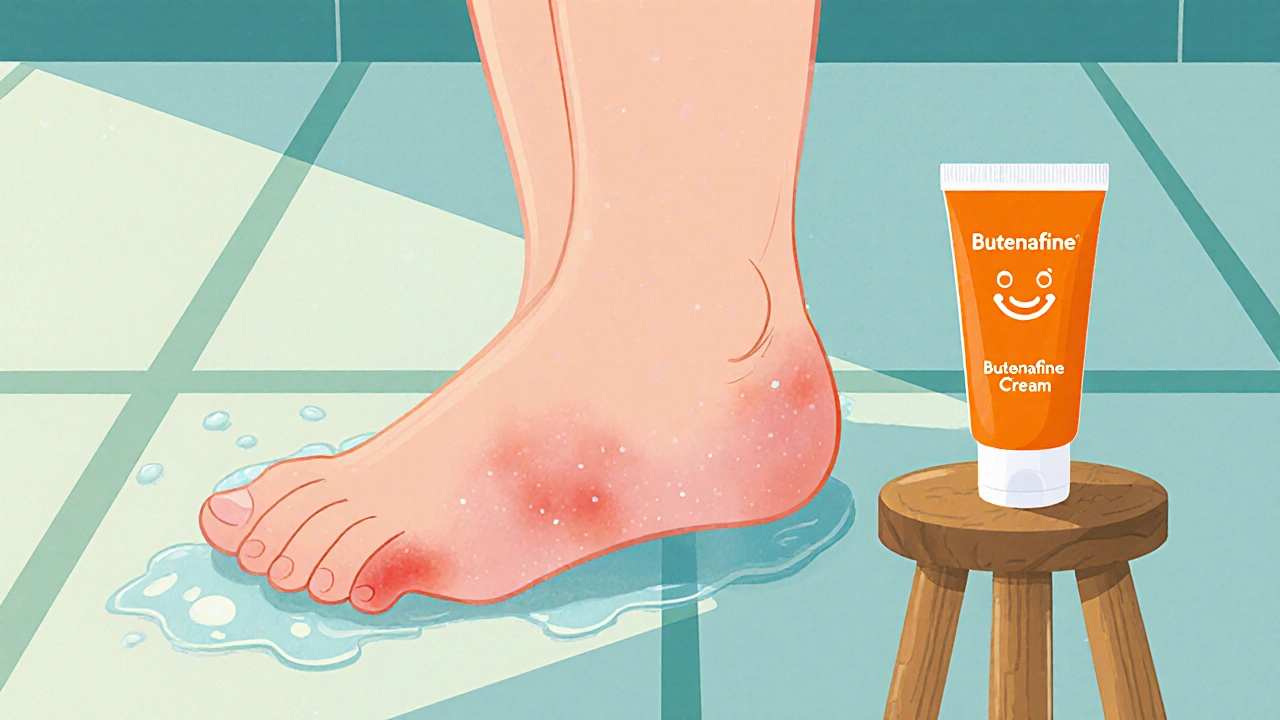Tinea Pedis: What It Is, How It Spreads, and What Actually Works
When you feel that itchy, burning skin between your toes — especially after sweating or wearing closed shoes — you’re likely dealing with tinea pedis, a common fungal infection of the feet also known as athlete’s foot. Also known as foot fungus, it’s not just a nuisance — it can spread to your nails, hands, or even to other people if you share towels or walk barefoot in locker rooms. This isn’t a rare problem. About 15% to 25% of people will get it at some point, and it’s way more common than most think.
Tinea pedis thrives in warm, damp places. That’s why it shows up after gym sessions, swimming, or long days in sneakers. The fungus doesn’t care if you’re young or old, fit or sedentary — if your feet stay moist, it finds a home. It often starts between the fourth and fifth toes, where sweat gets trapped and air can’t circulate. From there, it can spread to the soles, sides of the feet, or even under the toenails. You might notice flaky skin, redness, cracking, or blisters. Some people don’t even feel it until it’s already spreading.
What makes tinea pedis tricky is that it doesn’t always go away with just washing your feet. Over-the-counter creams like clotrimazole or terbinafine can help, but only if used correctly — and for long enough. Most people stop applying the cream as soon as the itching stops, but the fungus is still there, waiting to come back. And if you’ve had it before, you’re more likely to get it again. That’s why prevention matters just as much as treatment. Dry your feet thoroughly after showering, wear moisture-wicking socks, avoid walking barefoot in public showers, and rotate your shoes so they have time to air out.
It’s also worth noting that tinea pedis can be confused with eczema, psoriasis, or even bacterial infections. If your symptoms don’t improve after two weeks of antifungal treatment, or if your skin becomes swollen, oozing, or painfully red, you might have a secondary infection that needs antibiotics. Don’t ignore it. What looks like simple foot fungus can turn into something worse if left unchecked.
Many of the posts in this collection focus on skin conditions linked to long-term medication use — like steroid-induced skin damage or fungal infections from weakened immunity. Tinea pedis doesn’t always need prescription drugs, but if you’re on immunosuppressants, steroids, or have diabetes, your risk goes up. That’s why understanding how it behaves, how to stop it from returning, and when to see a doctor matters more than ever.
Below, you’ll find real-world advice from people who’ve dealt with this infection — from what worked for them to what didn’t. You’ll see comparisons between antifungal treatments, tips for avoiding reinfection, and how other health conditions make tinea pedis harder to manage. No fluff. No guesswork. Just what actually helps when your feet are screaming for relief.

Butenafine for Athlete's Foot: Fast, Effective Treatment Guide
Discover why butenafine is a fast, effective OTC solution for athlete's foot, how it works, proper usage steps, safety tips, and how it compares to other antifungals.
October 17 2025